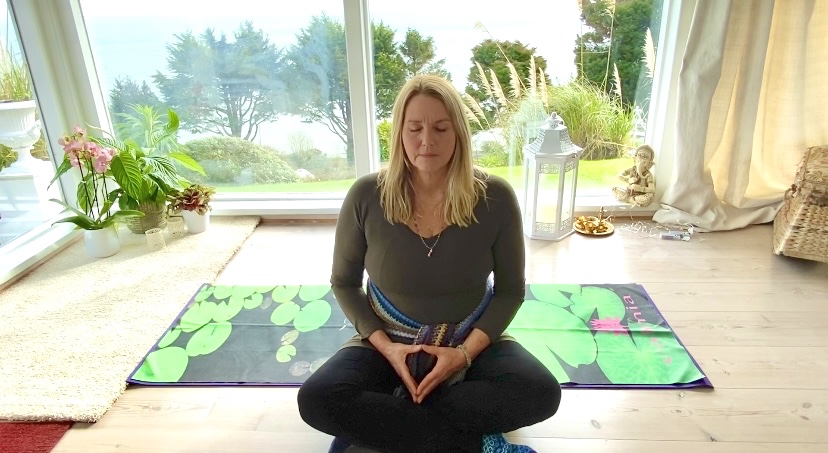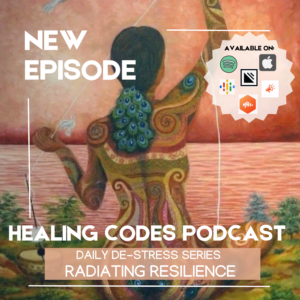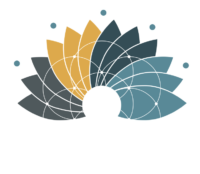 This week’s blog, Radiating Resilience, is the second in the Daily De-Stress series to help you identify and release patterns of stress that affect your health and well-being. You’ll receive practical tools for ways to build and sustain greater resilience when faced with stressful situations and return to a healthy baseline faster. I’ll cover ways to deepen your daily de-stress skills across the body matrix with the practice of Consciousness Medicine.
This week’s blog, Radiating Resilience, is the second in the Daily De-Stress series to help you identify and release patterns of stress that affect your health and well-being. You’ll receive practical tools for ways to build and sustain greater resilience when faced with stressful situations and return to a healthy baseline faster. I’ll cover ways to deepen your daily de-stress skills across the body matrix with the practice of Consciousness Medicine.
There are 3 key factors needed to eliminate the negative effects of stress in your life which include Recovery, Resilience and Revision. In last weeks blog Daily De-Stress, I covered the importance of self-care to recover and dig yourself out of the hole the effects of stress put you in. When we allow ourselves to rest and recover on a regular basis, we become more empowered to make the positive choices needed for a healthy lifestyle, release inner conflict, update limiting beliefs, clear energetic disturbances and release ancestral entanglements that are needed to treat stress on a whole person level for deep and lasting change.
I hope you have been able to take the recommendation from the last episode of sitting quietly for a few minutes during your day in stillness, with a focus on the breath to quiet the mind and relax the body. If you have been you’ll probably notice you are not feeling as drained by daily stressors, and that you feel more able to cope with what life throws at you.
Once you’re back at a good baseline, by allowing rest and recovery, we now want to fortify the system to handle times of stress with greater resilience. This builds a strong container across the body matrix to hold life force energy so that when we take a hit big it doesn’t diminish our overall strength. And even better, brings forward a stronger foundation through the opportunity for personal growth.
This is what is called positive stress, which is when a stressful situation is perceived as an opportunity that will lead to a good outcome. In contrast to negative stress or distress, which is when a stressor is perceived as a threat that will have a poor outcome.
In either case, it is important to note, it is about the personal perception of an outcome. If we believe in positive outcomes we are more resilient to stress. If there is a lot of negative or worst-case scenario thinking then our resilience to stress will be low. So a large part of building resilience is to listen to your inner dialogue and work towards habituating a more positive mindset.


The ability to perceive stress as positive or negative is installed in childhood. Science has studied how some children develop resilience while others don’t and have linked this to early childhood experiences that directly impact our ability to handle adversity as an adult.
A study from Harvard University explains how culturing resilience in childhood involves raising children in stable supportive environments, with a strong sense of self and perceived control, while being given opportunities to strengthen adaptive skills with access to sources of hope through faith and cultural traditions. When this is present for the child as they develop, they are able to experience stressful situations in positive ways that improve coping abilities and even prevent adversity in their future lives. Adults who strengthen these skills can better model them for the next generation.
If you didn’t experience these resilience-supporting aspects as a child, that’s ok, it is possible to build resilience as an adult by updating and working to revise this old childhood conditioning. I’ll get more into the revision part of de-stressing in next week’s episode but for now, let’s talk about ways to strengthen your presence of being to radiate resilience in a way that not only protects you from the negative effects of stress but prevents stressful situations from arising in the first place.
Resilience is something that needs to be nourished across all aspects of the body matrix to have the greatest success in eliminating the negative effects of stress. Having a daily practice that promotes relaxation while culturing the breath is a great tool. This helps release tension held in the physical body, allowing the nervous system to calm down. Because if your breathing is shallow, your body will take this as an indicator of being in danger and will elevate the fight/flight response. This is why doing a regular breathwork practice helps to calm, centre and allow for a deeper presence in every moment.


Breath involves the lungs, which are located in the heart chakra area which supports a healthy balance of health and unconditional love. Each expansion and contraction of the lungs as we breathe supports the healthy spin of the heart chakra. Lungs represent life since they are essential for living. We can live for weeks without food or water but only a few minutes without air.
Breath is also a metaphor for the strength of our life force energy. When we breathe fully, it allows us to access the full abundance of our life force energy and ancestors. And finally, from an emotional body perspective, grief is the lung’s emotion so breath helps release old grief patterns and activate the heart’s enlightened archetype of unconditional love.
Breathing is something you do every day, so it is a lovely place to focus on improving ways to build your breath through yoga, pilates, tai chi, or other practices that allow for building the breath to support you on all levels of being. You may also want to try this before bed… take 5-10 inhales and exhale where your exhale is twice as long as your inhale. Let go and Relax with each exhale. Release anything that belongs to others and reclaim the energies you may have left about during the day.
Notice how this allows your breath to flow more fully which relaxes the body and quiets the mind.
Full presence in the moment also supports the ability to be flexible, adapt and believe in the possibility of a positive outcome, all important factors in increasing resilience. One of the most common ways I see people pull themselves out of the present moment is through worry. When we are worrying about something we have stepped out of the present moment and into the potential of a future outcome whose uncertainty makes us anxious or worried about the outcome. The mind becomes engaged with this worry and it begins to take on a life of its own. And then when all turns out ok, some part of us makes the connection that worry makes good outcomes. So we will use it as an unconscious strategy to try to create a good outcome in a situation where we have no control.


Each time you do this you are interrupting neural net pathways associated with worry that have become deeply habituated in your system. This is part of the NLP (Neuro-Linguistic Programming toolbox, which is fundamental to the power of how it changes lives by changing brain chemistry to support new ways of being.
The idea is simple, the more you experience something the more your brain chemistry hard-wires it in. Your habituated thoughts have associated brain chemistry called neural net pathways that electric signal travels along. The more you experience it, the more electrical charge travels along that pathway. Like a river that carves the canyon, over time the worry neural net pathway runs deeper and stronger. The first step to breaking free of this is to notice when you are running it and make a conscious adjustment. This interrupts the automated pathway. Coming back to the present moment, focusing on your breath allows for that automatic cycle to lose its strength. Then consciously connecting into a positive thought or a positive outcome will help reroute the flow of that river of electrical brain chemistry to a new more positive way. It takes 21 days to make a habit, so if you can do this for 2 cycles of 21 days you will fundamentally change the way your brain is wired.


That’s a long way of saying external change starts from within. Clearing and aligning our subconscious patterning by revising limiting beliefs to empowering beliefs, releasing ancestral entanglements to suffering to allow love, life and happiness to flow fully and clearing disturbances in our energy body will fundamentally change your vibration so that your experience of reality will also shift to support your desired state experience.
This is the power of NLP in a nutshell. It helps to fundamentally shift your internal landscape into a deeper alignment with your truth and what you consciously want to create in your life. And it revises the old unconscious childhood patterning.
Building resilience from an energy body perspective involves aligning our central channels, clearing and aligning our chakras so that our auric layer creates a protective buffer that allows us to be more resilient in stressful situations. There are several earlier episodes with guided meditations that will help you build this energetic resilience including:


Building resilience across all aspects of the body matrix will supercharge your experience of life and will allow you to change your relationship with stress. I’ve given you a few ways to activate resilience through breathwork practices such as yoga and meditation. I hope you also see how the power of positive thinking not only helps resilience to stress but also creates a reality where stressors fall away and a more harmonious way of living unfolds.
I hope you enjoyed this article, thank you for reading. Next week I’ll add to the daily de-stress series with ways to revise old conditioning and unconscious patterning that cause stress to your system.
_____________
Find out more about Consciousness Medicine.
Upcoming summer retreats, courses, workshops and 1:1 sessions.
Sign up for my e-newsletter and stay connected on social media with links on the homepage.


